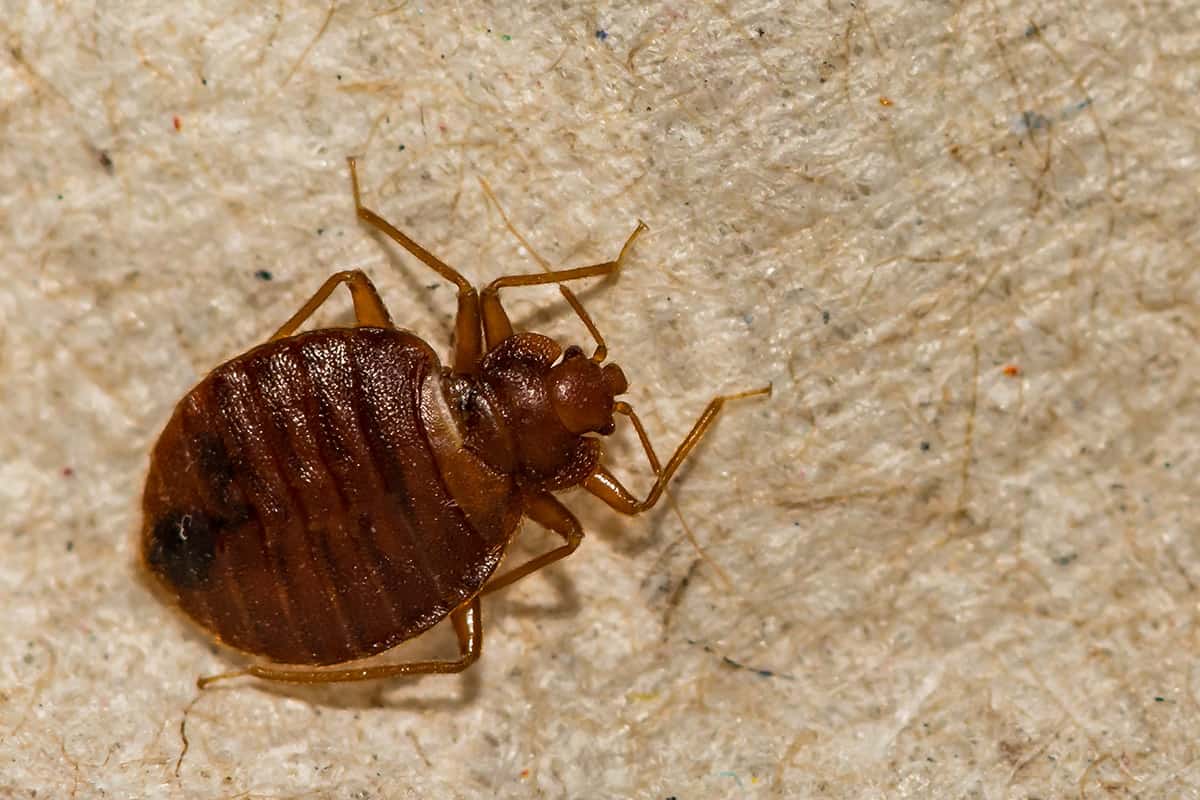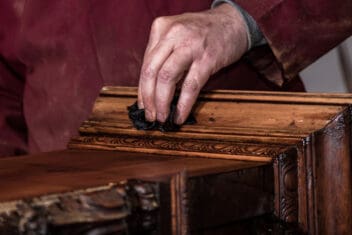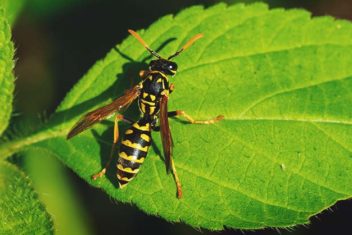Not gonna lie here: bedbugs are absolutely horrible to contend with. They’re insidious and take a lot of diligent attention to get rid of. If burning your house down isn’t an option, that’s okay: there are other techniques you can put into practice to eliminate them.
Where do Bedbugs Come From?
Probably the seventh circle of hell. These insects (Cimex lectularius) have been plaguing warm-blooded creatures for tens of thousands of years, likely with as much enthusiasm as they’re doing so today. In fact, scientists recently excavated a 77,000-year-old settlement in South Africa and found evidence of bedbugs in the sleeping mats they discovered.
In all seriousness, these things have been around forever and can lurk just about anywhere. You could be absolutely fastidious about keeping your home clean, but one of your kids will pick up a bedbug on the bus. Or you might pick one up in a cafe. Honestly, they can be absolutely anywhere and hitch rides all over the world.
If humans aren’t around, they’ll even feed on your pets or wild birds and rodents (though there are bedbug species that feed primarily on animals rather than humans).
If bedbugs show up at your house, that doesn’t mean that you’re a poor housekeeper. It just means that these jerks are really effective at getting around.
Signs of Bedbugs
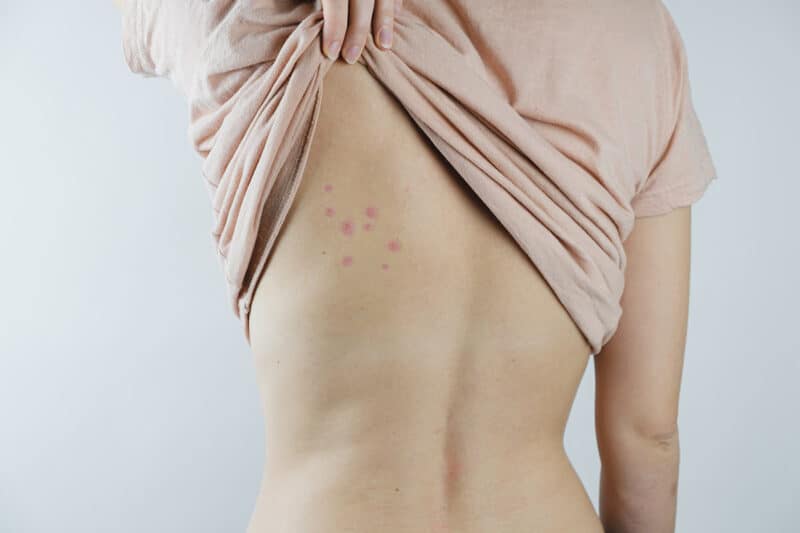
You’ll know that you’re dealing with bedbugs if you consistently wake up with burning, itching insect bites. They’ll often appear in clusters or lines of three bites, but that’s only if one single bug has been biting you. If several feast on you at a time, you might have several lines or clusters.
These bugs aren’t limited to your feet, ankles, hands, or waist either. They’ll get into your PJs or bite your face and neck if they’ve been hiding in your pillow. Inspect your bed carefully to see if you can find insects or droppings left behind by them. Even one bedbug can lay enough eggs to make your life hell for months.
Bedbugs are about the size of a lentil and are dark reddish-brown. You might not see them since they are small, but keep an eye out. They tend to live in groups. They’re mostly nocturnal and can live up to 10 months.
How to Deal with Them
The key to dealing with (and hopefully eliminating) bedbugs is to attack on two different fronts. Aim to destroy the ones that are currently feasting upon you and prevent the next generation from maturing. This means that you need to target adults as well as eggs and larvae.
1. Do a Thorough Search
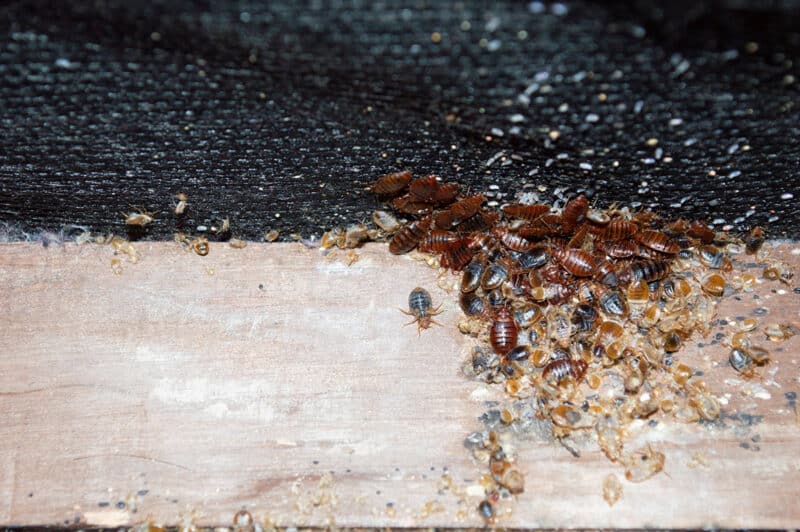
Adult bedbugs hide during the day and come out at night to suck your blood. As a result, you’ll need to check every possible place they could hide during the day. This includes:
- Cracks and crevices: check between floorboards, along/underneath baseboards and crown molding, cracks in walls, joints in furniture, etc.
- Bedding: look under the mattress (especially along the seams), inside pillowcases, between sheets.
- Detritus: remove anything that’s lurking beneath the bed or anywhere near it. This can include piles of books, purses and backpacks, slippers, shoes, and robes.
- Bookshelves: the bugs can slip into book spines or between pages to lurk.
- Inside the heads of screws
- In the space between light switch coverings and walls
2. Tape Up Cracks
Use masking or packing tape to seal up cracks absolutely everywhere in that room, as well as adjacent ones. This includes everything mentioned above. Put small pieces over screw heads, tape up any gaps in wallpaper. Take down posters or picture frames and check them thoroughly. Tape up any holes left from previous nails or screws, etc.
If you’d like to get hardcore and more permanent about these endeavors, get yourself some caulking. Use this to seal up any gaps or cracks you come across. This will actually go a long way towards avoiding future infestations.
3. Pack Everything into Plastic Bags
Get yourself several packages of black plastic garbage bags and pack just about everything you own into them. Set aside a few changes of clothes that are safe to put through a hot dryer cycle. You’ll have to use the hottest cycle you have available in your machine and keep that going for a solid 30 minutes to kill all the adults, larvae, and eggs.
If you’re dealing with bedbugs in either the height of summer or the dead of winter, then you have some luck on your side. Extreme heat or cold will kill bedbugs, so putting those plastic garbage bags full of clothing outside can kill off most of them.
They’ll need several days of consistent temperatures for this to happen, however. We’re talking either colder than 0°F/-18°C, or hotter than 95°F/35°C to kill them.
At the very least, these temperatures can slow them down until you can put your various clothing items through the dryer on that aforementioned super hot cycle. If that isn’t an option because the item is cotton or wool and will shrink in heat, there’s an alternative. Get yourself some large freezer bags, and freeze each clothing item for 72 hours. Keep these in sealed plastic bags and/or bins in a separate room until you’ve sorted out the bedroom.
4. Make Your Bed an “Island”
Bedbugs can’t jump, thankfully, so making your bed an isolated “island” is a great way to deter them. After you’ve placed bedbug-proof covers on your mattress and box spring (if you use one), move your bed at least 6 inches away from the wall and any furniture. This way, any that aren’t trapped inside those zippered bed bags won’t be able to climb anything to get to you.
If your bed has legs, get yourself some bedbug interceptors. These trap the bugs before they can make their way up into your bed. Alternatively, if you have a solid block bed base instead, wrap double-sided tape around the base. The insects will stick to it if and when they try to climb up.
Check these daily to see whether they’ve caught anything or not. It’s a good idea to keep these around, monitored, and regularly maintained for about six months.
5. Vacuum Like a Maniac

Go into full-on neat freak mode and vacuum absolutely everything in your entire house. Empty your vacuum or change out the bags every time you do so, just in case the bugs escape the machine and make their way elsewhere.
If possible, get a steam cleaner and use it on all your furniture and carpets. The high temperatures in the hot steam should kill off eggs, larvae, and most adult bedbugs too.
6. Scatter Diatomaceous Earth
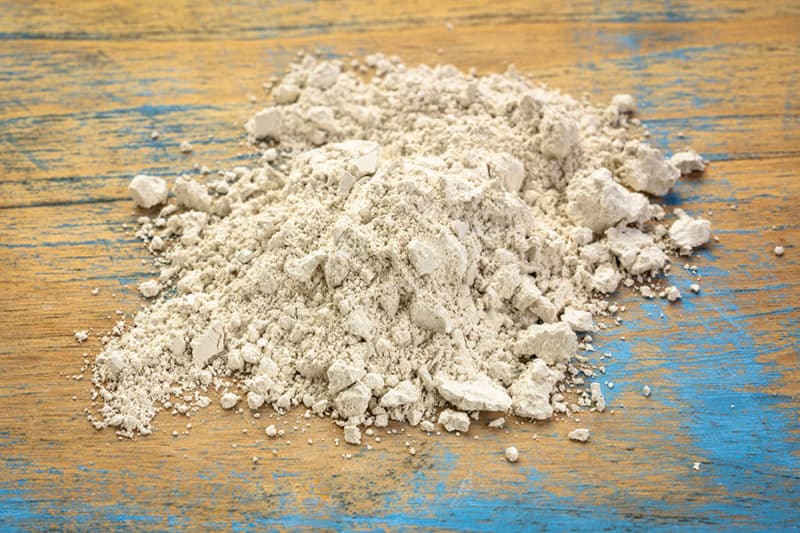
In between vacuum sessions, apply diatomaceous earth (DE) around your bed and along the periphery of your room. Be especially generous in corners. If you have carpeting instead of hardwood floors, you’ll probably need quite a bit of this stuff. An applicator can help you create good lines of earth rather than just clouds and mess.
Remember to apply this earth along window ledges, around the inside edges of drawers, around doorways, and behind appliances. Although having piles of this stuff around might look awful, it’s incredibly helpful for clearing up the insect issue. As a bonus, it’s a non-toxic natural pesticide that won’t hurt any of your animal companions.
*Note: put a little bit into your vacuum cleaner just before vacuuming as well. If you do suck up any bugs, the DE will kill them before they have a chance to escape and wreak any more havoc.
7. Call in the Experts if You Get Overwhelmed
If your efforts don’t seem to make much of a difference and you find that you’re still dealing with bedbugs several months down the line, it’s likely time to call in an exterminator. They’ll use special tools to inspect places you never even thought of and have stronger pesticides that should take care of the problem.
The good news is that they’ll be able to go all John Wick on those bugs, and they’re unlikely to come back. On the other hand, you’ll have to evacuate the house for about a week for the chemical treatments to dissipate. Perhaps longer if you’re sensitive to chemicals and/or you’re worried about small children and pets inhaling or ingesting them.
8. Remember Self Care Too!
While you’re making sure that your house is being cleaned and tended, remember to take care of your own health and wellbeing too. Getting bitten by bedbugs is no fun, and those bites can itch and burn for days. They can get even worse if you have an allergic reaction to them.
Calamine lotion, jewelweed salve, or topical Benadryl can help to alleviate the itching. Take lukewarm baths or showers rather than hot ones, and if there’s an antihistamine medication you trust, that may help as well. I’ve used wild cherry bark tincture and Amish drawing salve to treat various insect bites. Still, it’s important to check with your own healthcare provider before taking any kind of medication—herbal or otherwise.
If you find that you’re dealing with insomnia because you’re paranoid about being bitten at night, get yourself a silk sleeping bag liner. Tuck yourself into that, and even on a subconscious level, you’ll feel a lot more secure about not being bitten as you sleep. Alternatively, if you can afford to do so, book yourself into a hotel room for a few nights.
Most importantly, remember that you didn’t do anything “wrong” to deserve dealing with these bugs. Just like mosquitoes and fleas, they’ve been here longer than us and have merely learned to see us as a food source when convenient. They’re manageable, and with diligent care, are unlikely to return.
